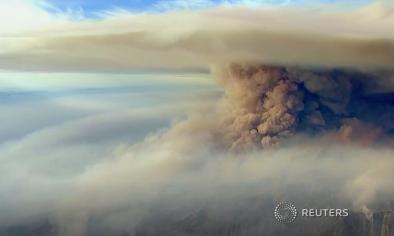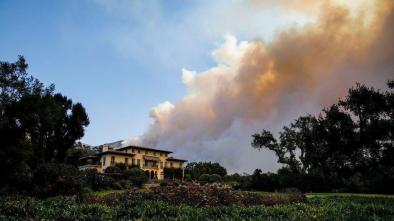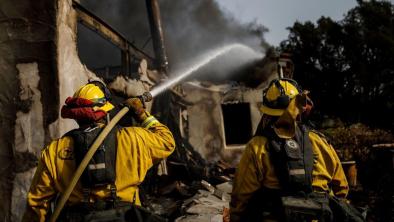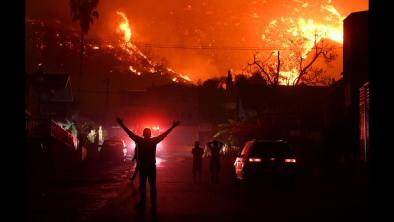The Still-Raging Thomas Fire Torches Its Way into California Wildfire History
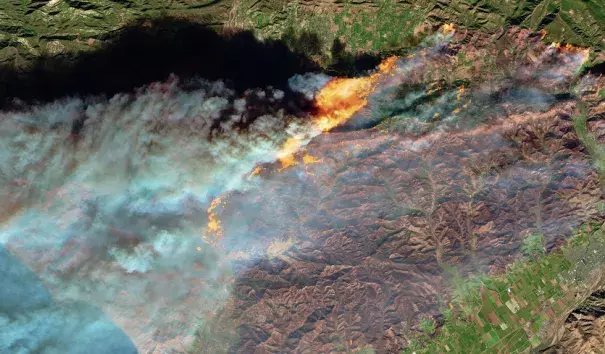
More than 6000 firefighters were engaged in a furious effort on Monday to contain the Thomas Fire, the largest of the multiple wildfires that have pummeled Southern California over the past week. The Thomas Fire made an enormous westward surge on Sunday, consuming tens of thousands of acres in Santa Barbara County and reducing the fire’s total containment level from 15% to 10%. Incredibly, the 57,000 acres burned between Sunday and Monday morning far exceeded the entire coverage of October’s catastrophic Tubbs Fire in the Santa Rosa area (36,807 acres).
As of Monday morning, Cal Fire reported that the Thomas Fire had officially consumed 230,000 acres and at least 790 structures, making it the fifth largest and tenth most destructive wildfire in state history. Two of the top 20 most damaging fires occurred in November, but none of the previous top 20 fires in terms of acreage occurred any later than October—much less in December, well beyond the typical tail end of wildfire season. It’s entirely possible this fire will burn till Christmas and beyond, and not out of the question it will roll past the Cedar Fire of 2003 (273,246 acres) to become California’s largest fire on record.
...
Factor by factor: how unusual is the Thomas Fire?
This month’s wildfires in Southern California have been historic even by the standards of this naturally fire-prone region. Huge fires can erupt across the Great Plains in winter during dry, windy conditions, but “I can't think of any western forest fires of size this far into winter,” said fire expert Stephen Pyne (Arizona State University) in an email. The lack of precedents for any wildfire this large so late in the fire season makes it natural to wonder what factors—including human-produced climate change—came together to produce the Thomas Fire.
...
Temperature, precipitation, and climate change: The closest tie between the Thomas Fire and long-term climate change is the sharp trend toward warmer conditions in California, which intensify the effects of any particular drought. Precipitation goes through natural year-to-year and decadal swings in California (and there is evidence of “megadroughts” prior to industrial times that were longer and more intense than anything observed in the last century, according to the Climate Science Special Report just released as part of the upcoming U.S. National Assessment).
Related Content
